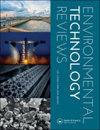The management of mercury from dental amalgam in wastewater effluent
Q1 Environmental Science
引用次数: 3
Abstract
ABSTRACT Dental restorative material mercury amalgam - which is composed of approximately 50% mercury - has been used for centuries. Although many alternatives to amalgam are available or under development, its mechanical, inert, durable and cost-effective properties mean that globally it is still the predominant filling material in dental practices. Current expert opinion is that, in a clinical setting, amalgam is safe and well tested, with clinical studies revealing no adverse health effects to amalgam fillings. Nevertheless, in line with the Minamata convention, the use of mercury amalgam is being phased down. More significantly, although waste disposal methods have developed considerably, the ultimate environmental fate of dental mercury is not fully delineated; furthermore, the amount of mercury in the environment from historical poor practice is still largely unknown. In this review an overview of how mercury is managed and disposed of in modern dental clinics is provided. Recent best estimates for mercury consumption in dental applications are discussed and compared to total global mercury consumption. The ultimate environmental sinks for the metal are identified and the methods currently employed to process products that are highly deleterious to the environment and human health are described. With a focus on environmentally mobile and highly toxic alkyl mercury compounds, some of the possible environmental implications that could occur with poor waste management are also outlined. GRAPHICAL ABSTRACT牙科汞合金废水中汞的管理
摘要:牙科修复材料汞合金——由大约50%的汞组成——已经使用了几个世纪。尽管汞合金的许多替代品已经可用或正在开发中,但其机械、惰性、耐用和成本效益高的特性意味着,在全球范围内,汞合金仍然是牙科实践中的主要填充材料。目前的专家意见是,在临床环境中,汞合金是安全的,经过良好的测试,临床研究表明汞合金填充物对健康没有不良影响。然而,根据《水俣公约》,汞汞合金的使用正在逐步减少。更重要的是,尽管废物处理方法已经有了相当大的发展,但牙科汞的最终环境命运尚未完全确定;此外,由于历史上的不良做法,环境中的汞含量在很大程度上仍然未知。本综述概述了现代牙科诊所如何管理和处置汞。讨论了最近对牙科应用中汞消费量的最佳估计,并将其与全球汞消费总量进行了比较。确定了金属的最终环境汇,并描述了目前用于处理对环境和人类健康高度有害的产品的方法。重点关注环境流动性和剧毒烷基汞化合物,还概述了废物管理不善可能产生的一些环境影响。图形摘要
本文章由计算机程序翻译,如有差异,请以英文原文为准。
求助全文
约1分钟内获得全文
求助全文
来源期刊

Environmental Technology Reviews
Environmental Science-Water Science and Technology
CiteScore
6.90
自引率
0.00%
发文量
8
 求助内容:
求助内容: 应助结果提醒方式:
应助结果提醒方式:


